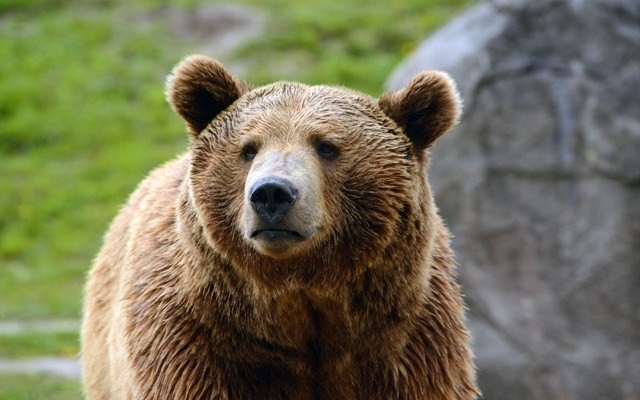With grizzly sightings up in the Sea to Sky this year, the Conservation Officer Service (COS) is reminding the public of the best ways to stay safe in bear country.
There are thought to be roughly 59 grizzlies between Howe Sound in Squamish and Pemberton Meadows. So far this year, the COS has received a dozen reported grizzly sightings compared to six in all of 2015.
Conservation officer Tim Schumacher had not seen the biological data and could not comment on whether the Sea to Sky’s grizzly bear population has increased, but did say recent work by groups like Coast to Cascades has helped preserve grizzly bear habitat in the region.
He also believes the popularity of backcountry recreation could be a factor in the higher number of sightings in 2016.
“I just think with how many more people we have out recreating in the backcountry, we are going to get more conflicts and sightings so that would also attribute to the higher number of sightings,” he noted, adding that it’s still highly unlikely to encounter a grizzly in this part of B.C.
When differentiating between grizzlies and their more common cousin, the black bear, colour and size can often be misleading, so it’s best to look for a combination of characteristics to tell them apart. A grizzly bear’s colour varies from blond to black, similar to a black bear, which in rare cases can also be white or blue.
Contrary to the commonly held belief, size is not a reliable indicator of species in bears. An adult male black bear, for example, can easily weigh as much or more as a female grizzly, which typically come in between 90 and 160 kilograms. Adult male grizzlies commonly weigh between 135 and 275 kg.
Other more effective ways to distinguish between the two species is the distinctive shoulder hump, longer front claws and short, rounded ears found on grizzlies. Grizzly bears also tend to have a facial profile that appears “dished-in between eyes and snout” compared to the straight profile of a black bear, according to the B.C. government.
Like black bears, the best strategy is to “make yourself look big” and “make lots of noise” if a grizzly charges you, Schumacher said. Grizzlies are less easily frightened as black bears and more likely to stand their ground.
“They aren’t ones to run away and climb a tree, where black bears will,” added Schumacher. “Any bear is best to avoid contact with, so if you can modify your route and back away slowly, that’s always the best option.”
Schumacher also recommended bear spray as the “No. 1 tool” for dealing with a potential bear conflict.
“It’s actually more effective than a firearm. Bear spray has a wide spray and there’s never been a human fatality when bear spray has been deployed, and that’s not the case with firearms,” noted Schumacher.
For more information on bear safety and preventing conflicts, visit www.wildsafebc.com.




